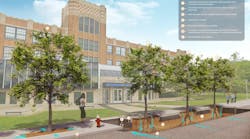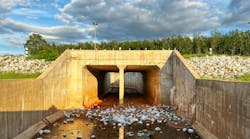IECA Control Factors: Solar Stabilization
Utility-scale solar energy development has increased considerably since 2010. This increase in development has provided opportunities to determine which methods are the most effective for stabilization. Many of these projects affect hundreds to thousands of acres of land and have unique obstacles and limitations.
One of the largest limitations to achieving effective stabilization is project budget. Oftentimes, projects do not allocate enough funds to allow for proper stabilization or only consider stabilization late in construction. The result is an inadequately stabilized project that costs the owner money and time in facility maintenance.
With proper planning, stabilization can be achieved in a timely and cost-effective manner. While there are various approaches to building a solar project, a common method is to clear and grade the entire footprint of a project. This method removes all plant residue and destroys any existing root system that was in place. If existing vegetation is removed, it can take years to re-establish native vegetation in some regions. Because cover is essential to erosion control, many projects that use this method suffer from significant loss of soil from wind and water. Not only does this impact construction directly, it also leaves the owners and contractors at risk of fines and violations from regulatory agencies.
For projects that clear the entire site, a dense application of hydraulically applied mulch and seed mixture greatly reduces erosion. This method is most effective when applied directly following grading, prior to installation of piles or solar panels. It provides temporary erosion control during construction activities. Depending on the climate and time of year, early seeding can allow time for seed germination by the end of the project. Hydraulically applied mulch and seed mixture is applied upon completion of construction to the entire site or areas that have not established sufficient vegetation.
An alternative approach to clearing and grading the entire footprint of a project is to utilize land that requires minimal disturbance and to engineer the plan to the existing topography. Agricultural land is well-suited for solar energy development. It typically is flat and provides well-developed soils for native low-lying grasses that are commonly used for revegetation.
Where there is no cover crop, it is best to drill seed prior to construction with an appropriate native seed mix. This allows additional time to establish vegetation prior to the completion of construction and less seed is lost to predation of wildlife in the area. A hydraulically applied mulch and seed mixture also is applied at completion of the project to areas that do not exhibit sufficient growth to provide effective stabilization. Typically, this area is minimal because little land under the solar panels was disturbed during construction.
Thorough planning for final stabilization prior to the start of construction can save millions and greatly reduce the risk of fines and violations. It takes an experienced team with an unconventional approach and a familiarity with the local area to achieve successful stabilization in a timely, cost-effective way.
Download: Here

